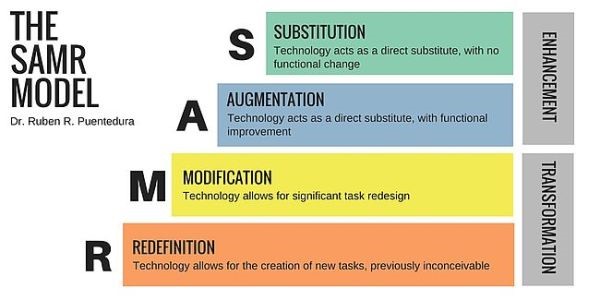Digital tools can be used not just to support learning, but to transform it by making it more interactive, inclusive and impactful. They can move beyond simply supporting classroom activities to truly redefining the learning experience. Adopting frameworks such as the SAMR model (Substitution, Augmentation, Modification and Redefinition), you can explore how technology can enhance and transform learning. From making tasks more efficient to creating entirely new learning opportunities that were previously unimaginable, digital tools can help you design lessons that are interactive, inclusive and deeply impactful. The SAMR model helps to foster collaboration, creativity and real-world problem-solving, turning education into a dynamic journey rather than a static process.

The SAMR model has a clear framework for integrating technology, in ways that progressively deepen its impact on teaching and student outcomes:
Substitution
Tech replaces traditional tool with no change in function. Using Word instead of pen and paper
Augmentation
Tech adds functional improvement. Using Word with spell check and comments.
Modification
Tech redesigns the task. Pupils co-edit a shared document with peer feedback.
Redefinition
Tech enables new tasks previously inconceivable.
Let’s take a look at some different scenarios and where they would sit within the SAMR model:
